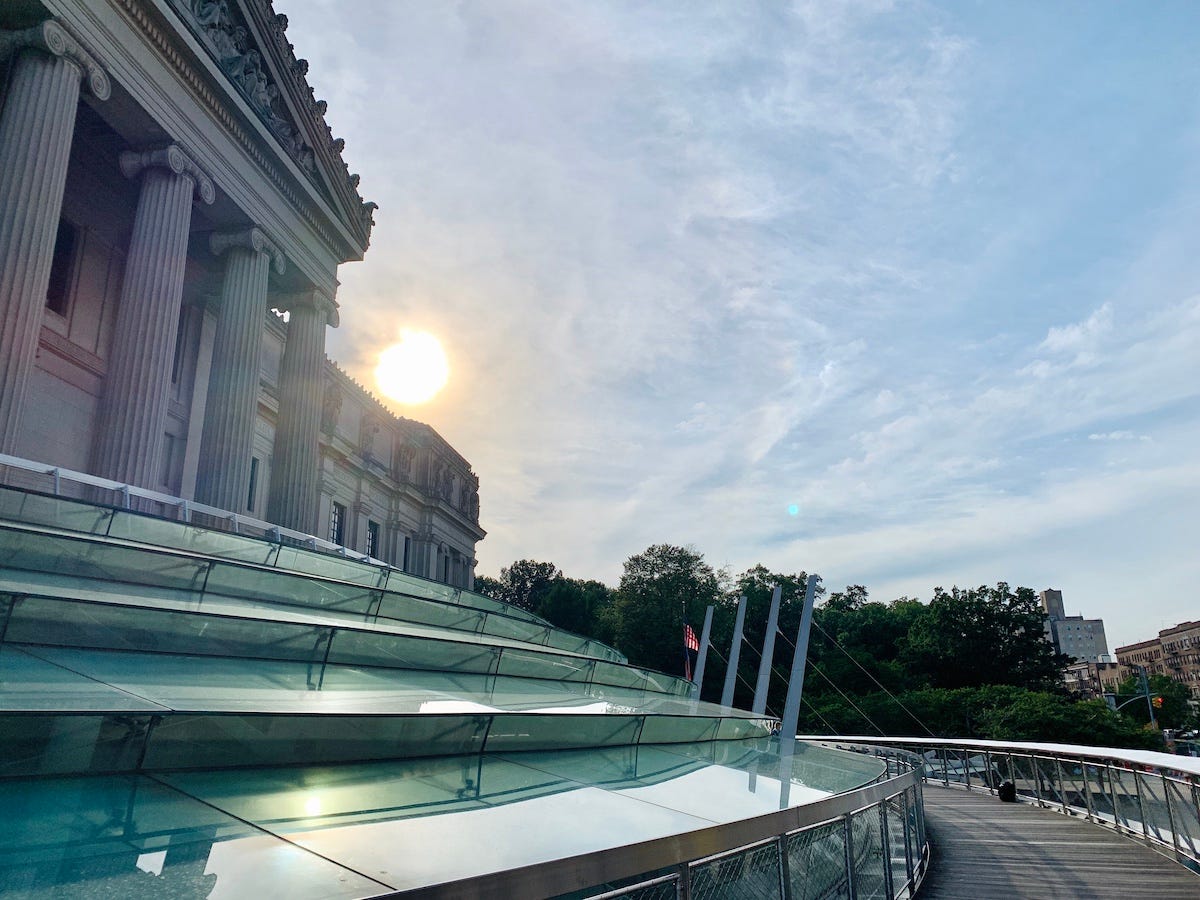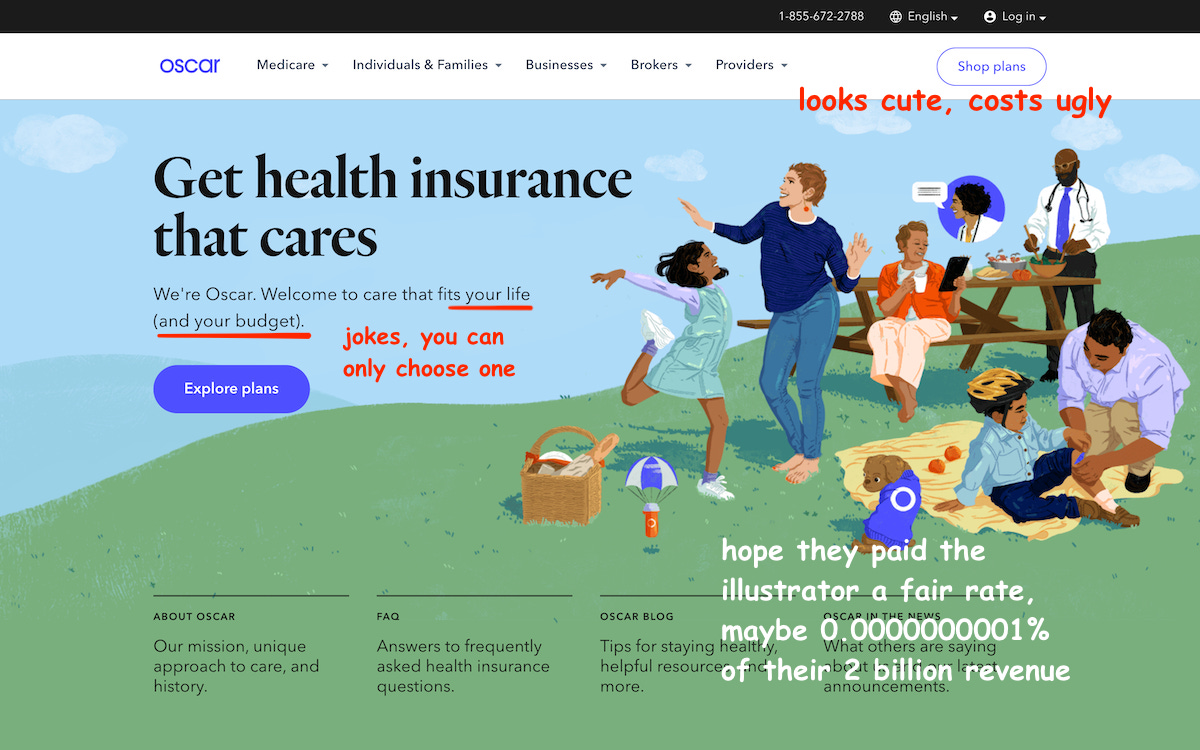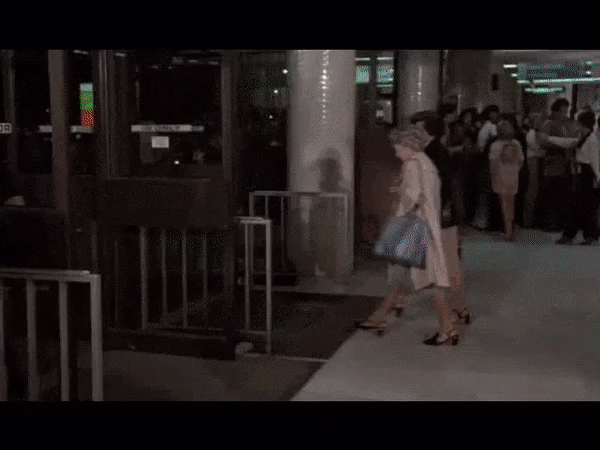Labor, Media, Power, Tech: The Holy Quadfecta
Doomspiral with me for just a moment
Every time I sprain my ankle, I count it a divine sign to sloow down, the automated brake trigger when my mind refuses to switch to lower gears. So God physically immobilizes me, and I come to halting stop before running into oncoming traffic. Apparently, I don’t need to speed through every yellow light.
“Caution,” the light says. “Charge!” I and every taxi driver interpret.
For a week or two, my world was confined to a four block perimeter (also the distance to my closest local wine shop, which feels like an indulgent extra portion of grace). It wasn’t ideal, but I am lucky to live in a comfortable home, with friends I love.
I bore the pain and inconvenience because of the expectation that I would heal. And thereafter that my world would again expand—without too much physical effort to move on two legs or wheels, or too much emotional effort in challenging my own biases, too many racist circles that I’m excluded from anyways, too many office bees obsequiously serving their tech kings, too many people traveling without self-sacrificial regard for the health of society (or their friend’s grandpa, if not their own). But that is not always reality.
Labor, Media, Power, Tech: The Holy Quadfecta
California recently passed Prop 22, which exempts companies like Uber from providing benefits to their contractors. Moreover, “Prop 22 doesn’t compensate workers for all working hours, only “engaged time”—so workers would earn far less than the minimum wage.” From angel investor and startup advisor Li Jin (formerly a16z):
“Uber has written on its blog that if Prop 22 fails, there would be “pressure on Uber to consolidate working hours across fewer workers in order to manage costs that are fixed per employee.” It’s a fear-based argument that has been made since the beginning of labor law. In 1933, FDR said, “No business which depends for existence on paying less than living wages to its workers has any right to continue in this country. By living wages, I mean more than a bare subsistence level—I mean the wages of decent living.”
As an independent consultant, I cover my own social welfare costs—what I would call necessary survival systems, otherwise semantically romanticized as “benefits.” It’s a never-ending pulse check (excuse the pun) of my projected revenue against state policy thresholds for subsidies, my personal health needs against risk and coverage.* But I have the background to figure out how to make it work, never mind that I’m working nonstop: I speak English fluently, I actively manage my finances, I’m a techy designer, and I don’t have dependents or severe health conditions.
*After I finally switched to a NY state marketplace plan from Oscar, a healthcare startup that finalized a $225M funding round in June 2020, off a $2B revenue base. I ran into their sparkly sleeved digital arms when COVID hit while I was still uninsured. We’re all codependent on tech, but it’s extra unhealthy (irony intended) when you’re shelling triple the amount of news and media and gym memberships combined, while you’re shelling out-of-pocket for a specialist consult.
It took me a year of freelancing to actively perceive and factor in emotional cost of taking on projects. Along with admin, biz dev, marketing, and project management, these don’t necessarily translate to billable hours. Contractors—from deliverymen to speech therapists to actors—all know this pain.
Ideally, as you grow in experience—and the continual mindset shift and boldness that accompanies it—you can work with clients as you collectively develop a more holistic approach to value and pricing.
But that oft-hard-fought freedom doesn’t exist for under-the-API gig economy workers. Uber drivers can’t reason with an algorithm; they can only set up flimsy plastic seat barriers to protect themselves from a deadly virus.
Meanwhile, those who graduate from elite colleges land straight on corporate cushions carry on in their unimpassioned, disillusioned days, with no debt and no burden to support the family. Their privileges are their emotional discomforts and spiritual discontents. (Myself included.)
As ex-banker and now-content strategist Ranjan Roy posits:
“People (especially the class with political power) slowly get used to comfortable rides and sushi deliveries, and these platforms became enmeshed in the societal fabric. Their model of worker compensation, their culture of pushing legal boundaries, their dependence on market concentration, and their slowly accrued power over the suppliers in their marketplaces all become the norm.”
And ironically, I’m writing about this, in smol attempt to upset the same power dynamic that also bleeds into media and journalism. We’re not peddling tangible goods or services—no, it’s nobler, we’re selling ideas!
But even if we’re not under-the-API, even if we think we’re building the API, we’re still chained to it. Take the Substack model and its Substackerati, as Clio Chang writes for Columbia Journalism Review:
In a broken industry, even a little agency can start to feel like control. But that won’t necessarily translate into the large-scale transformation that Substack’s founders pitch. If “be your own boss” is a nice slogan in the abstract, it ignores the fact that power dynamics always exist, even where they’re not formalized.
The obvious power play is that the journalist-influencers with the largest followings—and thus quickest path to sustainable monetization—are the ones who have already benefitted from the rigged system. (See: Molly Baz and Alison Roman in food media, Glenn Greenwald in politics, Vox co-founder and Harvard alum Matthew Yglesias in news)
So where’s the hope? Ben Thompson visualizes the $$$ and potential of the idea adoption curve in Stratechery:
“What is neat about this model is that it is far more sustainable and accessible than the old model of corporations and donors subsidizing think tanks, journals, and specialty magazines, and far more ideologically diverse than academia.”
But individual power is hard to rally against the tide of institution. Even for the well-intended and comfortably-financed reader—there’s a financial cap to how many news publications and email letters you can subscribe to. There’s a mental cap to how many ads/blockers you can handle for ungated content. There’s an emotional cap to the year of 2020 and the immediate years to come.
Ending on this from ex-Buzzfeed culture writer and PhD Anne Helen Peterson, because all roads this year lead to corony:
“I’m more convinced than ever that our overarching division is between collectivism and individualism: between acting and thinking in ways that aim for the better, collective good, and in acting and thinking in ways that aim to preserve the personal status quo.
Collectivism is thinking with a sociological imagination: understanding the ways that our personal experiences are shaped by structural forces. Individualism is understanding the world, at least largely, in terms of personal psychology: what can I do, what can I resist, what do I choose.”
Just to maintain our standard of living, our fun vacations, our safe vocations—we are flattening our creativity curves and not the curve of this dumb virus.
I’m no insurrectionist; I’m just a civilian who’s caught between stability and uncertainty, glory and humility, power and equity, work and rest. I recognize the futility of saying this all in *my newsletter,* the modern equivalent of shouting from the edge of the roof.
But if one person hears it—truly hears it—is that not enough to ask for in this relentless year?
For all the reasons stated above, consider supporting me at $5/mon or $50/year. Basically the entrance fee into my experimental digital sandbox—you’ll receive mixed media experimental intimate letters and join the secret cadre of paid supporters and wonderful human beans. And you can cancel anytime! Upcoming perks include handwritten holiday cards from yours truly.
If you’re not in a position to support but would like to join, email me and I’ll add you. In any case, the best thing you can do is share this with a friend (or two or three, or a zillion).
Links & colorful things
This deck dissecting the NYT’s strategy overhaul and success is crazy research distilled into pure art. It’s fun, I promise
Jonathan Majors riffing on movie script ideas:
“Marriage Story. Noah Baumbach, with our DNA, what does that look like?”
“What does illness look like in the Black body? Tell me a story about a cancer patient with a Black lead, because then we get back into the systematic fuckery that happens if you are a Black person with a real illness.”
“What would it look like if we had a Black person dealing with the opioid crisis? Not crack cocaine but the same thing that Bobby and Jane are doing. Can we tell that story? Where's our Beautiful Boy?”
This happened last month and I haven’t used the subway since March, but NYC has a new digital interactive subway map!!









